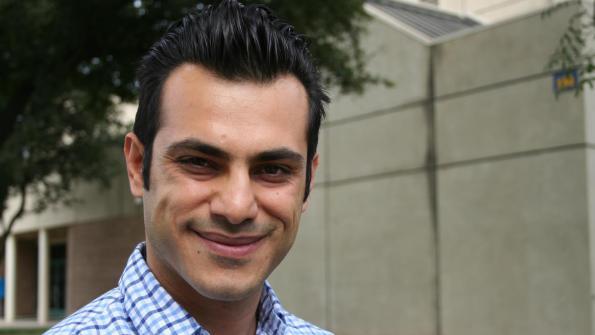
Finding Huanglongbing (HLB), also known as citrus greening disease, as early as possible continues to be a strategy industry leaders and researchers hope will hold back the disease from spreading throughout California.
Newly appointed UC Cooperative Extension Agricultural Engineering Advisor Alireza Pourreza earned his Ph.D. at the University of Florida in 2014 on an early-detection method that could help commercial growers.
Current methods of detection require visible symptoms, including mottled yellowing of leaves – symptoms that can also be evident of nutrient deficiencies in the tree. Confirmation of the disease requires testing commonly known as a PCR test.
“We discovered we could see the symptoms of Huanglongbing using a camera, a set of cross-polarizers and narrow band lighting before it is visible to the human eye,” Pourreza said.
Pourreza says yellowing of citrus leaves is caused by starch accumulations.
“If we could detect abnormal levels of starch in the leaf, we could tell it is affected with HLB,” he said. “Starch showed the ability to rotate the polarization plain of light. We used this optical characteristic to develop the sensing methodology.”
Pourreza said the team patented the technique and is working on developing a commercial product. He is seeking funds to continue the research in California, where HLB has been detected in at least 30 residential trees in the San Gabriel Valley of Southern California.
HLB is spread from diseased trees to healthy trees by the Asian citrus psyllid, a small invasive insect well established in Southern California, and has spread northward to the Bay Area plus Placer County near Sacramento.
Pourreza was awarded the 2016 Giuseppe Pellizzi Prize by the Club of Bologna for the best doctoral dissertation focused on agricultural machinery and mechanism. He is based at the UC Kearney Agricultural Research and Extension Center at Parlier.
About the Author(s)
You May Also Like






